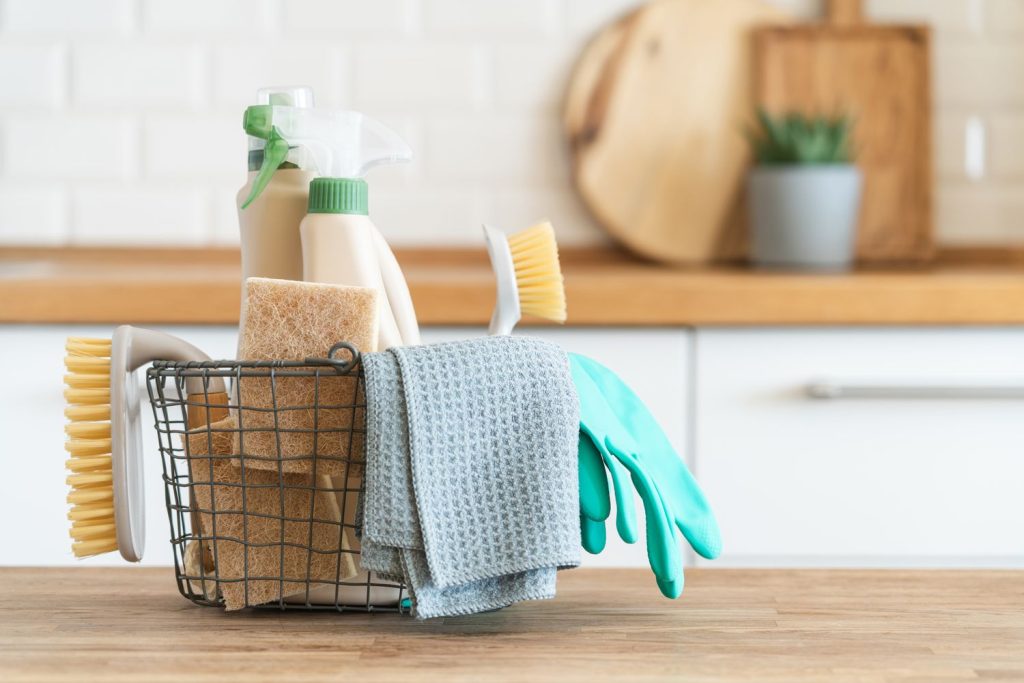
15 Best Practices for Sustainable Home Cleaning Using Thrifted and American-Made Products
With rising concerns about tariffs and supply chain instability, many households are rethinking their reliance on imported and disposable cleaning products. Fortunately, sustainable home cleaning is not only more affordable—it can also support local economies, reduce waste, and simplify your life. Below are 15 practical, low-impact cleaning habits using thrifted goods and American-made products.
1. Repurpose Old Towels and T-Shirts into Cleaning Rags
Why: Replacing paper towels with reusable cloths cuts down on waste and cost.
How: Cut worn towels or T-shirts into squares; serge edges if fraying is a concern.
Where to get: Thrift stores, Freecycle, or Buy Nothing Project.
2. Use Mason Jars for Mixing and Storing Cleaners
Why: Glass jars are reusable, non-reactive, and widely available.
How: Use for DIY cleaner blends—label clearly and store in a cool place.
Where to get: Ball Mason Jars or your local hardware/general store.
3. Mix Your Own All-Purpose Cleaner
Why: Simple ingredients can clean most surfaces, reducing reliance on plastic bottles.
How: Mix 1 part white vinegar, 1 part water, optional lemon peel or essential oil.
Where to get: Mountain Rose Herbs, Plant Therapy.
4. Choose American-Made Eco-Friendly Cleaners
Why: Supports domestic producers and ensures safer ingredients.
What to try: Biokleen, Better Life, Branch Basics
Where to buy: Thrive Market, Azure Standard, or local co-ops.
5. Make a Simple Scrubbing Paste
Why: You don’t need synthetic cleaners for grime.
How: Mix baking soda with castile soap or vinegar for sinks, tubs, and ovens.
Where to get: Dr. Bronner’s Castile Soap.
6. Use Wool Dryer Balls Instead of Dryer Sheets
Why: Reusable and reduces static and drying time without synthetic fragrance.
Where to get: Friendsheep Wool, Etsy, local farmer’s markets or craft fairs.
7. Buy or Make a Reusable Mop Head
Why: Avoid disposable pads by using washable cloth heads.
How: Sew from towels or flannel; attach with Velcro.
Where to get: Package Free Shop, Etsy.
8. Use Cleaning Vinegar in Bulk
Why: Effective for cleaning glass, floors, and kitchen surfaces.
Where to buy: Azure Standard, local refill shops or co-ops.
9. Switch to Refillable Glass Spray Bottles
Why: Durable, plastic-free, and ideal for DIY solutions.
Where to get: Public Goods, Zero Waste Store, Life Without Plastic.
10. Skip Disposables with Reusable Cellulose Sponges
Why: Compostable and long-lasting.
Where to get: Three Bluebirds, Skoy Cloths, Thrive Market.
11. Make a Lemon Vinegar Infusion for Natural Scent
Why: Adds a pleasant aroma and boosts degreasing power.
How: Soak lemon peels in vinegar for 1–2 weeks, strain, and dilute.
Where to get: Use kitchen scraps—free and effective!
12. Use Baking Soda for Deodorizing and Scrubbing
Why: Inexpensive and widely useful from the fridge to the bathroom.
Where to buy: Bob’s Red Mill, co-ops, or bulk refill shops.
13. Try Bar Soap for Cleaning (Not Just Bathing)
Why: Old-fashioned soap works great for surfaces and hand-washing fabrics.
What to try: Kirk’s Original Coco Castile, Chagrin Valley Soap & Salve
Where to buy: Farmer’s markets or Thrive Market.
14. Use a Natural Bristle Brush for Dishes and Surfaces
Why: Durable and compostable alternatives to plastic scrubbers.
Where to buy: Redecker USA, Brooklyn Made Natural, or local zero-waste shops.
15. Clean the Air with Simmer Pots or DIY Sprays
Why: Commercial air fresheners are often toxic.
How: Simmer cinnamon sticks, citrus peels, or herbs in water; or mix water with essential oils in a spray bottle.
Where to get: Starwest Botanicals, Mountain Rose Herbs.
Final Thoughts
Creating a sustainable home cleaning routine doesn’t require expensive subscriptions or imported products. With a mix of thrifted finds, basic ingredients, and American-made alternatives, you can clean effectively while building a resilient, eco-friendly lifestyle. It’s not just about cleanliness—it’s about intention, stewardship, and simplicity.

Leave a Reply